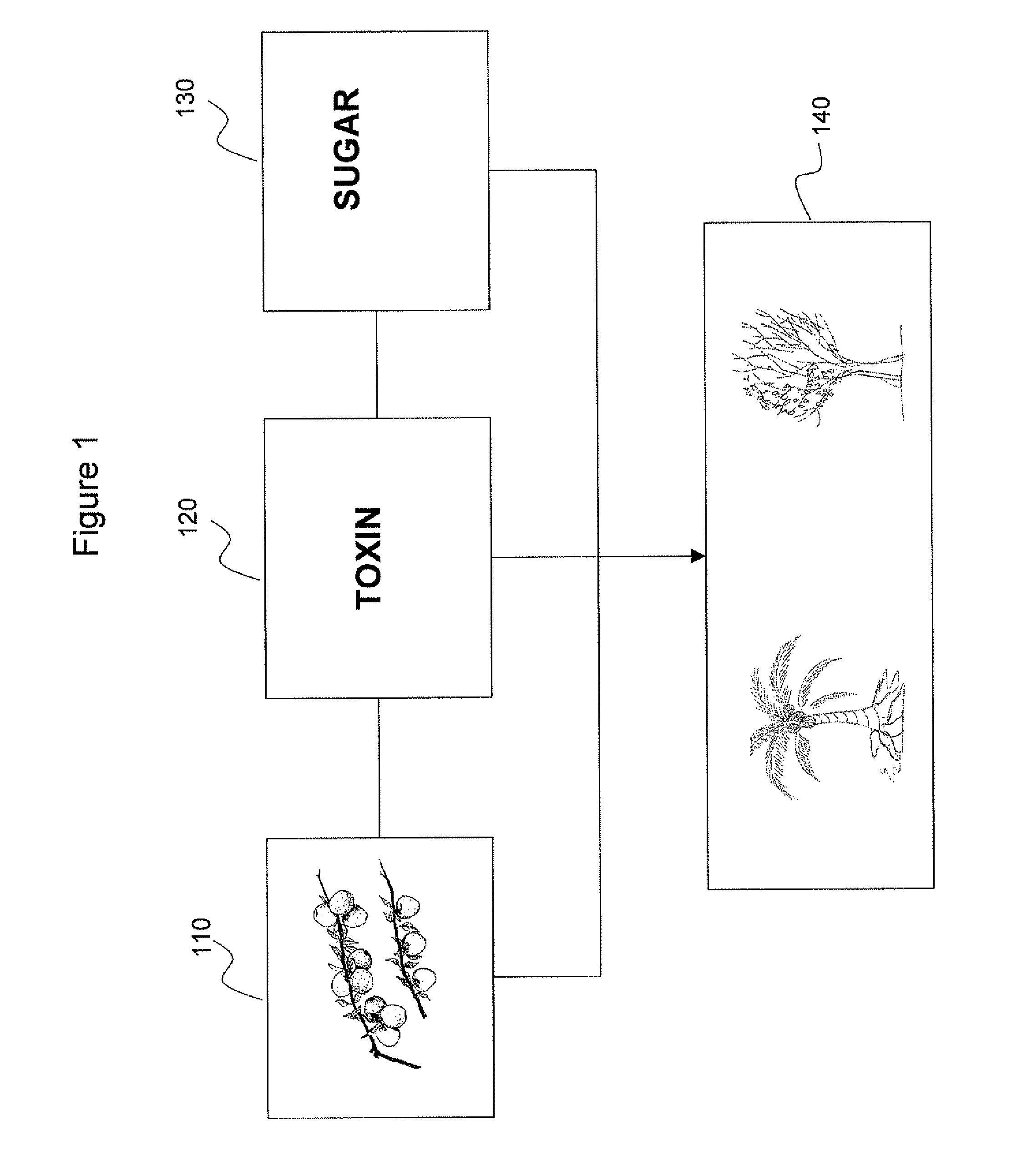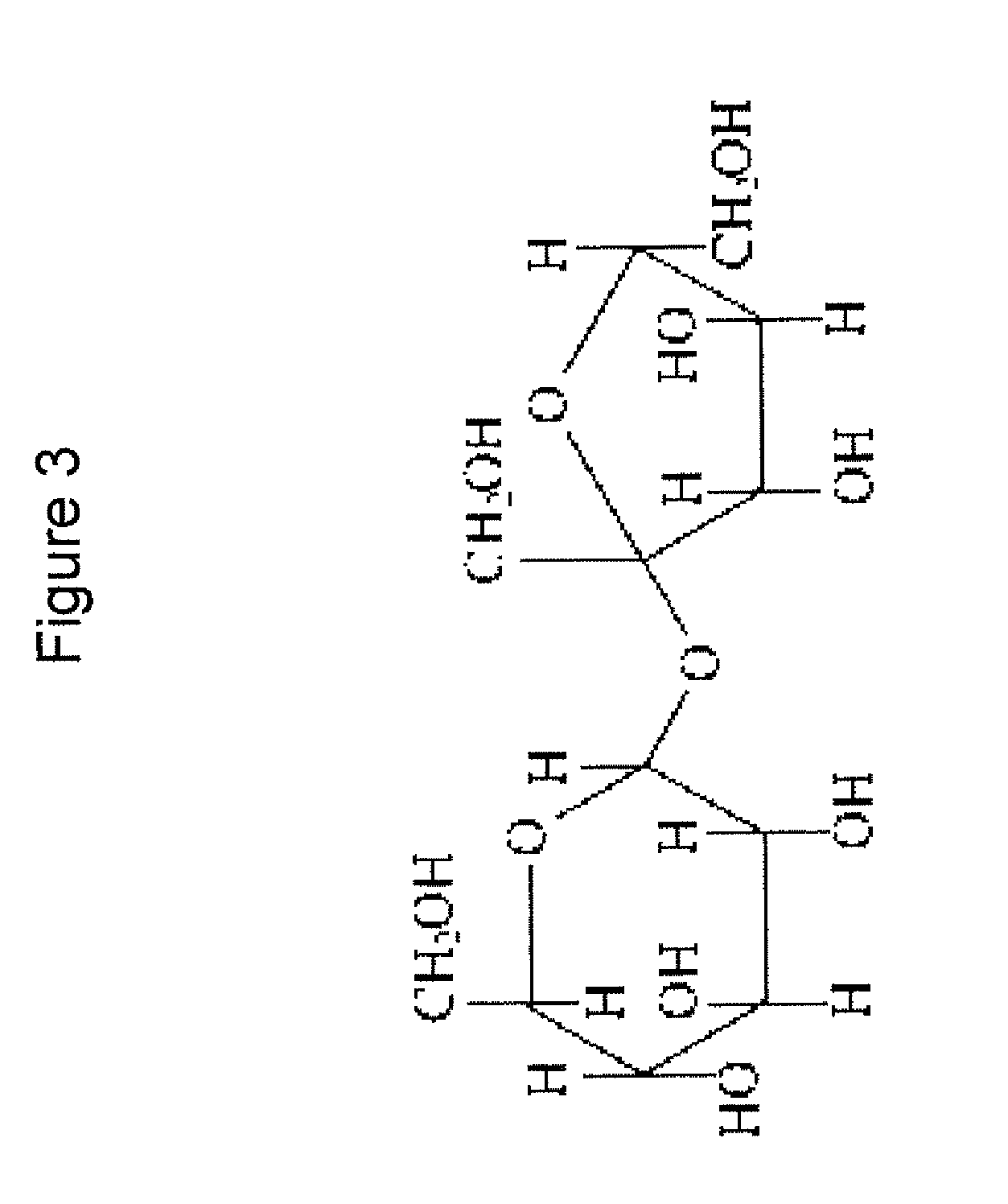Controlling sugar feeding insects
a technology for insects and sugar, applied in the field of entomology, can solve the problems and achieve the effect of slow release of extracts into the environmen
- Summary
- Abstract
- Description
- Claims
- Application Information
AI Technical Summary
Benefits of technology
Problems solved by technology
Method used
Image
Examples
experiment 1
Materials and Methods
[0070]The energy for the activities of female and male mosquitoes is provided by plant sugars or ‘sugar meals’ usually nectar from flowers and also from nectaries on leaves and stems, and honeydew excreted by homopterans. These are of particular interest in a situation of sugar shortage as the scarcity of flowers in arid areas. These plants are extreme attractants to nectar searching mosquitoes. Relying on this attraction we sprayed flowering Acacia raddiana trees in small mosquito infested oasis with sugar solution laced with oral insecticide Spinosad. Virtually the whole population of Anopheles sergentii was eliminated when lured by the fragrance of the flowers the mosquitoes fed on the poisonous sugar solution (Muller & Schlein, 2006). In the present study that was also carried out in the same sites, with no use of the attraction of local flowers but constructed and presented bait stations in which the attractant was fermenting ripe fruit.
[0071]The effect of ...
experiment 2
Attraction of Flowers and Extracted Flowers of Tamarix nilotica
[0081]Open flowers of T. nilotica (weighing 9.5 kg) were put in 4000 ml hexane (Merck, reinst) in glass beakers and crushed. The fluid, 3700 ml hexane extract, was then filtered into bottles that were tightly closed. Aliquots of 80 ml extract were gradually soaked and dried in filter paper sheets (Din A 4, Blotting paper, Whatman Inc. NJ, USA) that were fan-shape folded with 1 cm ridges. Control similar papers were wetted with 80 ml untreated hexane. The experimental and control filter papers were attached to CDC like traps without light while other traps were provided with fresh T. nilotica flowering branches weighing ˜1250-1500 gr. A line of traps (CDC-like miniature light traps (Model 512, John W. Hock, Gainesville, Fla.) provided with the above or other baits (five traps per bait, three repetitions) was presented overnight in mosquito habitats. In site 1 the average catch of control trap was 6.4 Culex pipiens mosqui...
experiment 3
The Use of Natural Floral Centers for Mosquito Control.
[0082]In traps baited with branches of common local plants, the highest, 60.5% of the total catch of Culex pipiens, was by flowers of Tamarix jordanis trees. The effect of the attraction was tested in the field. Experimental conditions: Selected control and experimental Mediterranean study sites were uncultivated areas stretching for about 500 m, along two channels, with Tamarix jordanis trees near their center. The mosquito population in the study sites was monitored for a month. On day six both sites were sprayed with sugar solution and additives using 7-liter hand sprayer (Killaspray, Model 4005, Hozelock-ASL, Birmingham, England). T. jordanis trees in the experimental site were sprayed with 7 to 15 liter solution of 20% weight / volume (w / v) sucrose, 2.0% w / v food blue No. 1 (Indigotine C.I. stern, Natanya, Israel) and 0.04% w / v oral insecticide Spinosad (“Tracer”®, Dow Agrosciences, Canada) in water. In the experimental site ...
PUM
 Login to View More
Login to View More Abstract
Description
Claims
Application Information
 Login to View More
Login to View More - Generate Ideas
- Intellectual Property
- Life Sciences
- Materials
- Tech Scout
- Unparalleled Data Quality
- Higher Quality Content
- 60% Fewer Hallucinations
Browse by: Latest US Patents, China's latest patents, Technical Efficacy Thesaurus, Application Domain, Technology Topic, Popular Technical Reports.
© 2025 PatSnap. All rights reserved.Legal|Privacy policy|Modern Slavery Act Transparency Statement|Sitemap|About US| Contact US: help@patsnap.com



